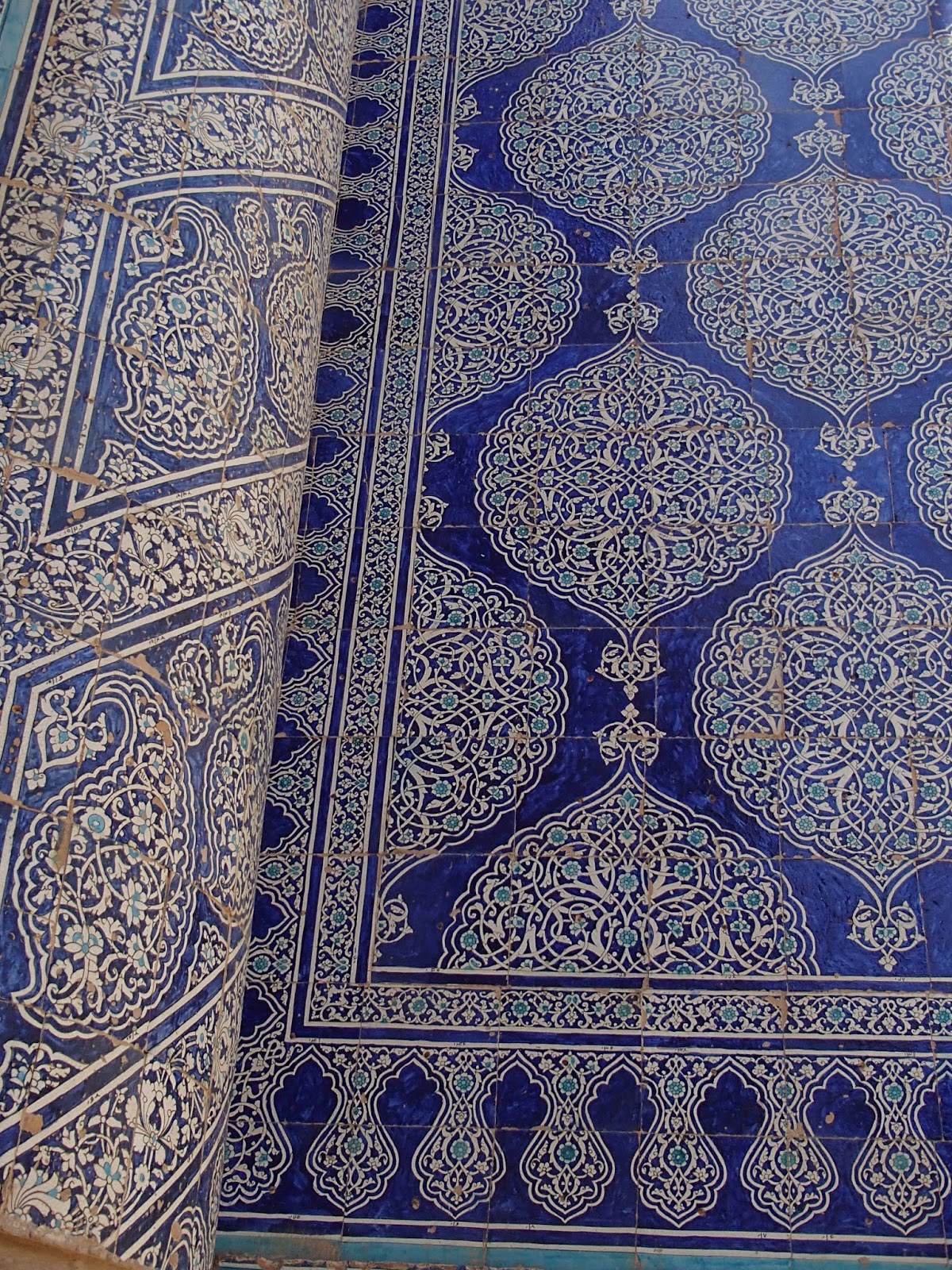 |
| popular Leslie - pay back time for all the pictures we take of people |
Muhammad Amin Khan Madressa and Kelte Minor Minaret
The first building on the right inside the west Gate was the Muhammad Amin Khan Madressa, built in the 1850's. Outside stands the fat, turquoise-tiled Kelte Minor Minaret, built at the same time and looking like it was originally meant to be far taller, which would have made it much higher than rival city Bukhara's Kalyan Minaret, and therefore the tallest structure in Asia. Construction was stopped because Khiva's Khan died, but the khan was said to want it so tall that he could see his rival city Bukhara from the top.
 |
| Other local tourists |
Muhammad Rahim Khan Madressa
Facing the Kuhna Ark, across an open space that was a busy palace square and place of execution, this 19th century madressa is named after Khan Muhammad Rahim II. The Khan was also a poet under the pen name Feruz.
Pahlavan Mahmud Mausoleum
Pahlavan Mahmud was a poet and legendary wrestler and Sufi philosopher who defeated Indias's wrestling champion to gain the "world title" of the day, and he became Khiva's patron saint. His 1326 AD tomb was rebuilt in the 19th century and requisitioned in 1913 by the Khan as the family mausoleum. The chamber under the dome at the North end of the courtyard holds the tomb of Khan Muhammad Rahim II, who ruled from 1865 to 1910.
Juma Mosque and Minaret
 |
| Jumah mosque |
 |
| Tash Hauli Palace receiving courtyard |
 |
| Harem shelf unit |
 |
| Sitting area for wives |
 |
| Details of tiles |
 |
| Roof of harem sitting area |
 |
| Deap carving on wood columns |
Tash Khovli Palace
Tash-Khovlifasig the caravansary, contains Khiva's mast sumptuous interior decoration, ceramic tiles, carved stone and woods. Built by Alloquli Khan between 1832 and 1941 as a more splendid alternative to the Kuhna Ark, it's said to have over 150 rooms off central courtyards. The biggest courtyard, immediately inside the entrance, is the Harem. The rooms off the harem's south west corner hold craft exhibits.The Ishrat Khovli was a ceremonial and banqueting hall, like the Kuhna Ark, with circles for yurts during special occasions.
We enjoyed seeing many of the old sights, but Leslie was determined to buy the distinctive Ikat fabric that was visible everywhere, even on large umbrellas providing shade for shop stalls, but did not seem to be for sale. We asked a shop where they got the material, and it was in a local bazaar just outside the gates, where we escaped the few European tourists that had come to Khiva as it's summer began. Leslie was successful in getting it for a couple dollars per meter, and we went to lunch hot but happy.
 |
| Lovely narrow street - no cars |

No comments:
Post a Comment